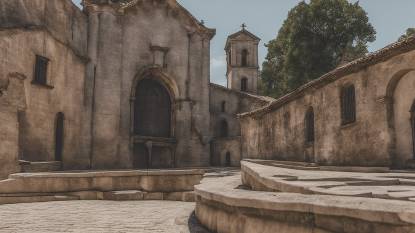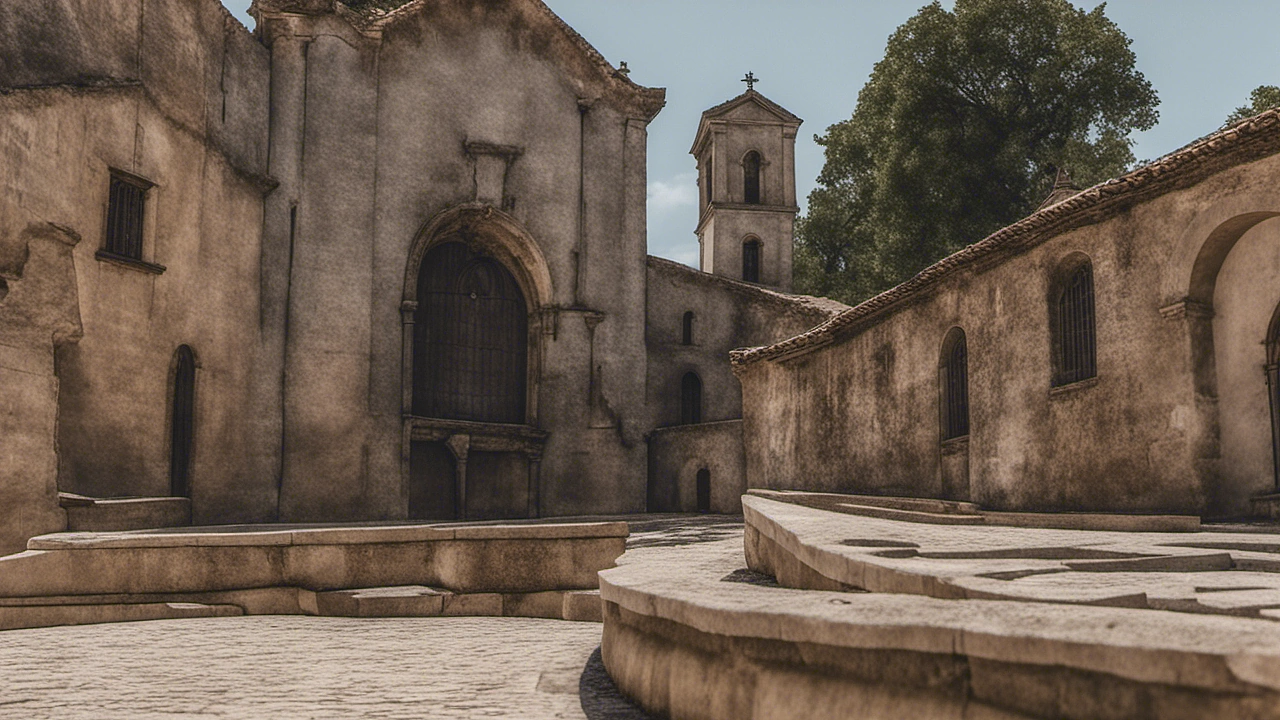
Monastery of San Xoán de Caaveiro A Capela Visitor Guide
Posted: | Updated:
Reading time: 21 minutes
Monastery of San Xoán de Caaveiro A Capela Visitor Guide
Posted: | Updated:
Reading time: 21 minutes
By: Simon Kemp, Editor
If you are looking for a place to visit in Galicia, Spain, perhaps while you are making a pilgrimage along the Camino Inglés and took the opportunity to discover the Fragas do Eume, you might want to consider the Monastery of San Xoán de Caaveiro otherwise known as Caaveiro Monastery. This is a historical and cultural site that dates back to the tenth century and has a rich history and architecture. In this post, I will outline some of the main features and attractions of this monastery, as well as some tips on how to get there and what to do nearby.
Embedded deep in the Atlantic Forest of the Fragas do Eume, The Monastery is a place that combines history, culture and nature in a unique way. It is a perfect destination for those who love art, architecture and spirituality. If you are planning to visit Galicia, don’t miss this opportunity to discover one of its hidden gems.
Key Takeaways
- San Xoán de Caaveiro Monastery, a 10th-century site in Galicia, Spain, was founded by Saint Rudesind.
- The monastery features a Romanesque church, a cloister, a tower, and a museum.
- It’s located in Fragas do Eume natural park, a well-preserved Atlantic forest.
- Open from Tuesday to Sunday, 10:00 to 18:00. Entry fee is 2 euros for adults and 1 euro for concessions.
- Guided tours are available in Spanish, Galician and English.
Origins of the Monastery
The origins of the monastery date back to the 10th century, when Saint Rudesind, a Galician bishop and abbot who was canonized by the Catholic Church, founded a small hermitage dedicated to Saint John the Baptist on the site. Saint Rudesind was a prominent figure in the Galician church and culture, and he is credited with promoting monastic reform and fostering artistic and literary production.
Rudesind established the monastery as a Benedictine community that followed the Rule of Saint Benedict. He also donated several lands and properties to the monastery, which helped it grow and prosper. The monastery was located in a strategic position, overlooking the Eume River and controlling the access to the Fragas do Eume, a natural park with lush forests and diverse wildlife.
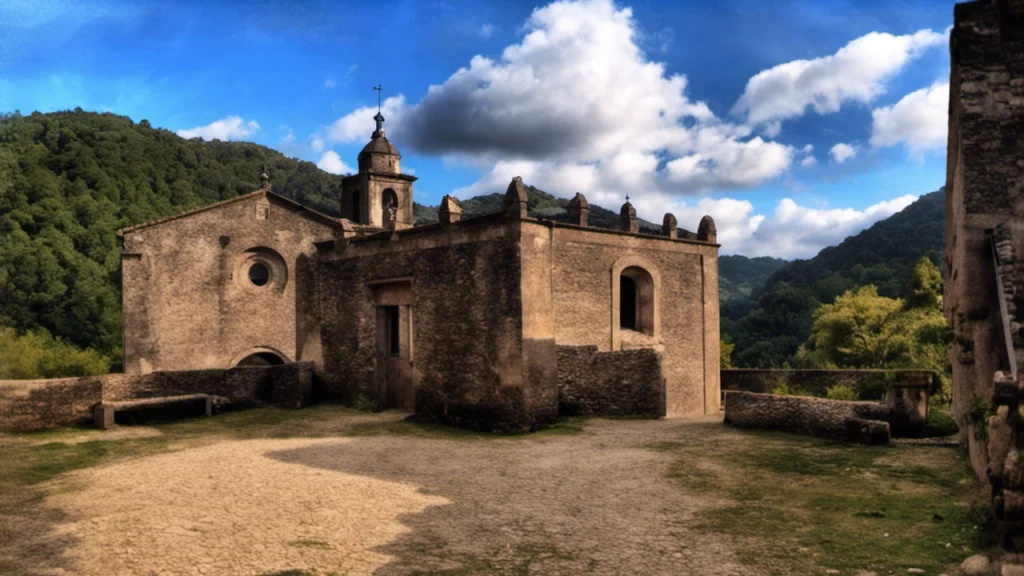
Alternate Names for the Monastery
The monastery is known by several names in local Galician, Catalan, Spanish and English languages. This can be a bit confusing while searching for information, so here is a definitive list of local names and languages that you will find written or printed information about the Monastery in:
- Galician: Mosteiro de San Xoán de Caaveiro
- Catalan: Monestir de San Xoán de Caaveiro
- Spanish: Monasterio de San Juan de Caaveiro
- English: The Monastery of Caaveiro
- English literal translation: The Monastery of St. John of the Cauldron
Who was San Xoán de Caaveiro?
The name San Xoán de Caaveiro or St. John of the Cauldron in English, appears to refer to the story of St John’s Martyrdom in The Golden Legend, which is a collection of stories about the lives and miracles of the saints, written by Jacobus de Voragine in the 13th century. It was one of the most popular and influential books of the Middle Ages, and it contains many legends that are not found in other sources.
One of these legends is the story of St John’s martyrdom, which tells how the apostle John survived a boiling cauldron of oil and then was exiled to the island of Patmos, where he wrote the Book of Revelation.
According to The Golden Legend, John was the only apostle who did not die a violent death, but lived to old age in Ephesus. He was beloved by the people and respected by the emperor Domitian, who sent him a gift of a poisoned cup. John blessed the cup and made the sign of the cross over it, and a serpent came out of it and died. John then drank from the cup without any harm.
However, Domitian was not pleased by this miracle, and he ordered John to be brought to Rome. There he was thrown into a cauldron of boiling oil, but he emerged unscathed, as if he had been bathed in cold water. The people who witnessed this were amazed and converted to Christianity, but Domitian was enraged and banished John to the island of Patmos.
On Patmos, John received visions from God and wrote the Book of Revelation, also known as the Apocalypse. He also performed many miracles, such as raising a dead youth, healing a paralytic, and converting the king of the island. He also had a disciple named Prochorus, who wrote down his words.
After Domitian’s death, John returned to Ephesus, where he continued to preach and teach until his death at a very old age. He was buried in a tomb that was filled with manna, a heavenly food that nourished his body. He is revered as one of the four evangelists and as the beloved disciple of Jesus.
Map of Monastery of San Xoán de Caaveiro
Monastery Renovations
The monastery underwent several renovations and expansions over the centuries, especially in the Romanesque and Baroque periods. The complex was declared a Cultural Heritage Site in 1975 for its architectural importance. It is owned by the Provincial Council of A Coruña.
The oldest remains are from the twelfth century, highlighting the church that rises on a very steep hill that forced its builders to save the unevenness of the land by means of high walls with buttresses and underground rooms. The Romanesque temple is well preserved in the head and much of the nave.
There is also a beautiful baroque bell tower from the eighteenth century, the work of the school of Simón Rodríguez. The house of the canons and the kitchens of the monastery are also acceptably preserved.
The monastery was founded in 934. The donations of Bishop Rosendo gave him an important fortune. Later, the bishop of Santiago de Compostela assigned territories and jurisdictions to the monastery on the right bank of the Eume river. At first the monastery belonged to the order of San Benito, but changed to the order of San Agustín in the twelfth century.
The domain reached its greatest extent between 1220 and 1259. More than fifteen parishes were under its jurisdiction. Thus, the cenobium obtained a great power, reaching its church the category of Royal Collegiate with six canons that it preserved until the end of the eighteenth century, when, after being abandoned, it began its decline and deterioration.
In 1896, Pío García Espinosa bought much of the land around the monastery and restored it with an authorization from the Archbishop of Santiago de Compostela,. He demolished, to undertake the restoration, the front house and the priory church, built a crenellated pavilion and rebuilt the chapel of Santa Isabel.
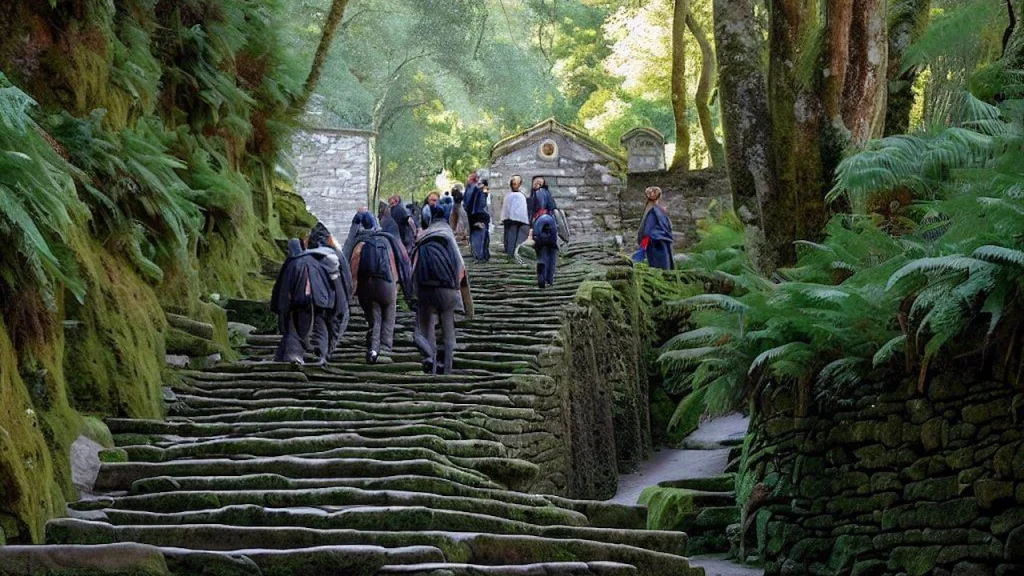
12th Century Renovations
The first major renovation of the monastery took place in the 12th century, when it adopted the Romanesque style that characterizes most of its buildings today. The Romanesque church, with its three naves, semicircular apse, and bell tower, was built during this period, as well as the cloister, the chapter house, and the refectory. The monastery also became affiliated with the Order of Saint Benedict, which imposed a stricter rule of life and discipline on the monks.
This architectural transformation was influenced by the Cluniac reform, a movement that aimed to restore the purity and discipline of monastic life, following the rule of Saint Benedict. The Cluniac monks had a great impact on the artistic and cultural development of Europe in the Middle Ages, and their presence can be seen in many monuments across the continent.
The renovation of the Monastery involved the construction of a new church, a cloister and several chapels, as well as the decoration of the walls and columns with sculptures and paintings. The Romanesque style is characterized by its simplicity, harmony and elegance, as well as its use of semicircular arches, vaults and columns.
The monastery’s church has a Latin cross plan, with a single nave and a semicircular apse. The main facade has a beautiful rose window and a portal with three archivolts and capitals decorated with vegetal and animal motifs. The cloister is also a masterpiece of Romanesque art, with its four galleries supported by double columns and arches.
The Monastery was not only a place of prayer and contemplation, but also a center of culture and learning. The monks had a library and a scriptorium, where they copied and illuminated manuscripts. They also cultivated the land and managed several farms and villages in the area.
The monastery reached its peak of prosperity and influence in the 13th and 14th centuries, but it also faced many challenges and difficulties throughout its history. It suffered several attacks, fires and plunderings by different invaders, such as the Vikings, the Normans and the Saracens. It also endured periods of decline and abandonment, especially after the 15th century, when it lost its autonomy and became dependent on other monasteries.
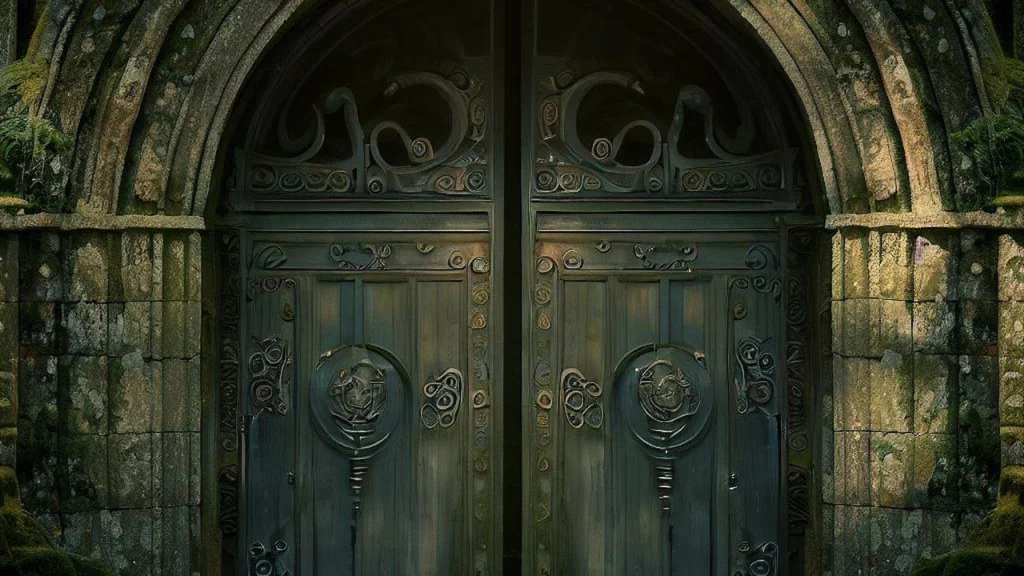
16th Century Transformation
The 16th century marked another important phase in the history of the monastery, when it underwent a Baroque transformation. The Baroque style added more ornamentation and dynamism to the Romanesque structures, creating a contrast between simplicity and complexity.
The main façade of the church, with its elaborate portal and sculptures, was built in this style, as well as the sacristy, the choir stalls, and the altarpieces. The monastery also expanded its territory and influence, acquiring new lands and privileges from the kings and nobles.
18th Century Renovations
The 18th century was the last period of splendor for the monastery, before its decline and abandonment in the 19th century. During this time, the monastery reached its peak of artistic and cultural activity, hosting several renowned painters, sculptors, and writers.
The monastery also renovated some of its buildings, such as the dormitory and the library, and added new elements, such as the fountain and the sundial.
Modern Restorations
Since being declared a National Monument in 1931, the Monastery has been restored and preserved by various institutions and organizations, such as the Xunta de Galicia (the regional government) and the Barrié Foundation (a private foundation dedicated to culture and education). Today, the monastery is open to visitors who want to admire its beauty and learn about its history. It also hosts cultural events and activities throughout the year, such as concerts, exhibitions and workshops.
The most recent renovations took place between 2006 and 2010, when a comprehensive intervention was done to restore all the buildings and their surroundings.
Monastery Abandonment
The political and social changes that occurred in Spain at the end of the 18th century and throughout the 19th century had a negative impact on the monastery. The Napoleonic invasion, the liberal reforms, and the confiscation of ecclesiastical properties led to the suppression and dissolution of the monastery in 1835.
The Monastery was abandoned after the ecclesiastical confiscations that took place in Spain during that time and fell into ruin and decay, until it was declared a national monument in 1931.
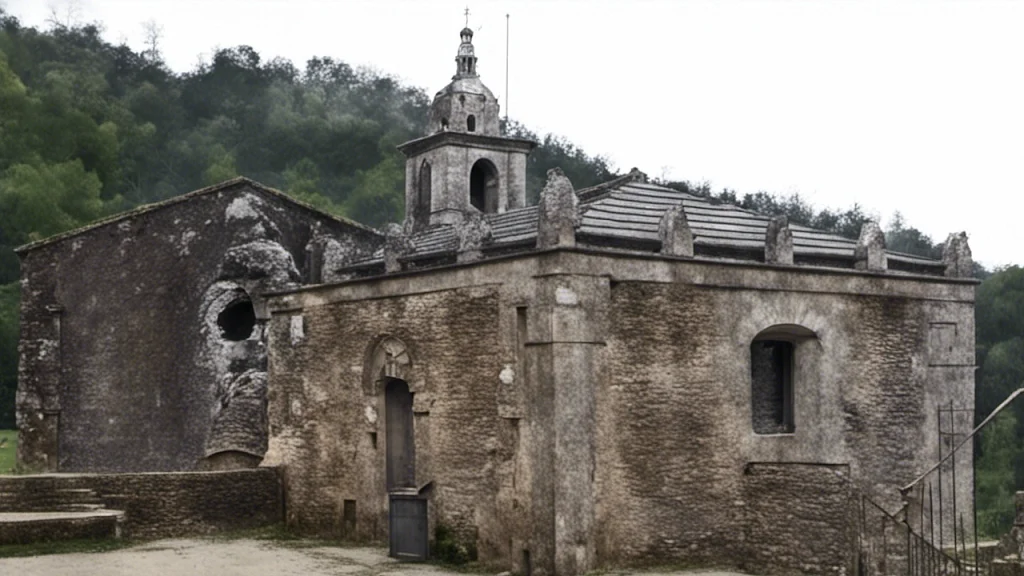
Notable elements of the Monastery
This venerable complex boasts a fascinating blend of Romanesque and Baroque elements, each contributing to its unique character. The Monastery buildings can be described by the following elements:
The Church, which has a Romanesque nave and a Baroque facade. The church houses the tombs of Saint Rudesind and his relatives, as well as some valuable artworks, such as a Gothic crucifix and a Renaissance altarpiece.
The Cloister, which is also Romanesque and has a square shape with four galleries. The cloister is decorated with carved capitals that depict scenes from the Bible, animals, plants and geometric motifs.
The Tower, which is Baroque and has a rectangular shape with four floors. The tower was used as a defensive structure and a bell tower. It offers a panoramic view of the surrounding landscape.
The Museum, which is located in the former refectory and kitchen of the monastery. The museum displays some of the archaeological and artistic pieces that were found in the monastery, such as pottery, coins, sculptures and paintings.
Visitor Information
Today, the monastery is open to visitors who can enjoy its beauty and history, as well as its natural environment.
Opening times
The Monastery is open to visitors from Tuesday to Sunday, from 10:00 to 18:00. The entrance fee is 2 euros for adults and 1 euro for children, students and seniors. There are guided tours available in Spanish, Galician and English.
Travel to the Monastery
To get to the monastery, you can drive or take a bus from Ferrol or Pontedeume, two nearby towns. The bus will drop you off at the entrance of the Fragas do Eume natural park, where you can walk or take a shuttle service to the monastery. The walk is about 3 kilometers long and takes about 45 minutes. The shuttle service costs 1 euro per person and runs every 15 minutes.
If you want to explore more of the area, you can also visit the Fragas do Eume natural park, which is one of the best preserved Atlantic forests in Europe. You can enjoy hiking, biking, kayaking or birdwatching in this park, which has more than 200 species of plants and animals. You can also visit other historical sites, such as the Castle of Andrade or the Bridge of Pontedeume.
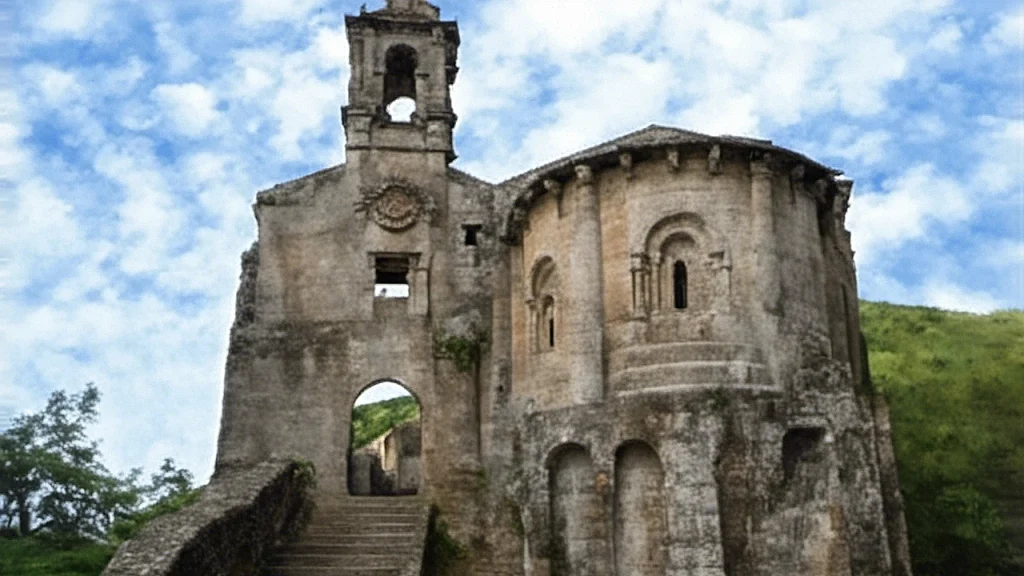
Who was Saint Rudesind the Monastery Founder?
Saint Rudesind, also known as San Rosendo or Rudesindo, was a Galician saint who lived in the 10th century. He was not only a bishop and an abbot, but also a regional administrator and a military leader under his kinsmen, the Kings of León. His life was full of achievements, challenges and miracles. In this blog post, we will explore his biography, his legacy and his cult.
Birth and early life
Saint Rudesind was born on November 26, 907, in Monte Córdova, Santo Tirso, Portugal (then part of the County of Portucale). He belonged to a noble family: his father was Count Gutierre Menéndez, brother-in-law to Ordoño II and supporter of Alfonso III of León, and his mother was St. Ilduara Eriz, daughter of count Ero Fernández. He had a sister named Hermesenda, who married Count Pelayo González and became the mother-in-law of count Gonzalo Menéndez.
Saint Rudesind became a monk at a young age and was ordained as a priest by Bishop Sisnando of Santiago de Compostela. He became bishop of Mondoñedo-Dumio at the age of 18 (as Rudesind II). He served as bishop from 925 to 950, then after a hiatus in which his nephew Arias Núnez filled the role, again served briefly from 955 to 958, to be followed again by Arias. Another nephew, Arias Peláez, would later hold the see.
Monastic founder
As a prolific founder of monasteries, under the Benedictine Rule. He founded monasteries such as Saint John of Caaveiro (934) and the Monastery of San Salvador de Celanova (September 12, 936). To build Celanova, he managed to make his brother Fruela and his cousin Jimena give up their rights to the land of Villar, where he founded this monastery. He also founded or reformed other monasteries such as San Martín de Xubia (947), San Miguel de Eiré (948), San Salvador de Lourenzá (950), Santa María de Meira (951), San Salvador de Paderne (953), Santa María de Monfero (955), San Salvador de Gondomar (956), Santa María de Oseira (957) and San Pedro de Rocas (960).
Rudesind was also involved in the political and military affairs of his time. In 955, he was named by King Ordoño III governor of the lands of Celanova. He also had jurisdiction over the lands that extended from Riocaldo (the southern boundary of Galicia) to Santa Maria de Ortigueira (on the Cantabrian coast). Later, at the request of Elvira Ramírez of León, aunt of the future Ramiro III, he was made governor of Galicia, from spring of 968 to early 969.
Soldier and Military Leader
He led forces against Norse and Moorish armies. The Moors had crossed the Mondego and had reached the Minho. In 966, the Norsemen had raided Galicia and killed the warlord and bishop of Santiago de Compostela Sisnand in battle, but Saint Rudesind later rallied the local forces and killed their leader Gundered.
After the killing of Sisnand in the battle of Fornelos, Saint Rudesind was appointed administrator of the See of Iria Flavia, and he was in charge of that diocese from 968 to 977. He also participated in several councils and synods, such as those of León (968), Zamora (969) and Santiago de Compostela (970).
Death and Burial
Saint Rudesind died on March 1, 977, in Celanova. He was buried in the monastery he had founded there. He was canonized in 1195 by Pope Celestine III.
St. Rudesind left behind a remarkable legacy as a religious reformer, a cultural patron and a political leader. He promoted monasticism and clerical discipline in Galicia and beyond. He supported education and culture in his monasteries, where he gathered manuscripts and relics. He also fostered artistic expression, as evidenced by the Romanesque architecture and sculpture of some of his foundations.
He also played an important role in the defense and consolidation of Galicia as a political entity within the Kingdom of León. He maintained good relations with the kings and nobles of his time, but also defended the rights and interests of the Church and the people. He was a respected and influential figure in the Galician society of his time.
Saint Rudesind is venerated as a saint by the Roman Catholic Church and the Eastern Orthodox Church. His feast day is March 1. He is the patron saint of Pinar del Río, Cuba, and of several towns and parishes in Galicia and Portugal. He is also invoked against storms, droughts and diseases.
His relics are preserved in the Monastery of Celanova, where his tomb is a place of pilgrimage and devotion. His cult spread throughout Galicia, Portugal, Spain and Latin America. He is depicted in art as a bishop or an abbot, holding a crozier, a book, a model of a church or a sword. He is sometimes accompanied by a bear, a deer or a raven, animals that are associated with legends and miracles attributed to him.
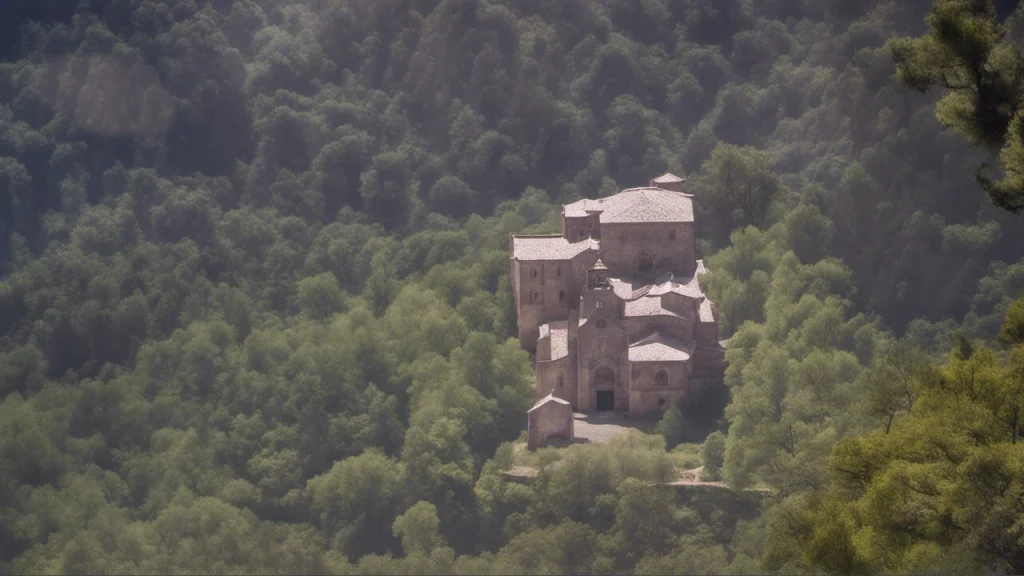
Fragas do Eume Natural Park
If you are looking for a place to immerse yourself in nature and enjoy the beauty of a pristine forest, you might want to spend some time in the surrounding area of the Monastery. This park is one of the best preserved examples of Atlantic coastal forest in Europe, and it offers a variety of attractions for visitors of all ages and interests.
The Fragas do Eume natural park covers an area of over 9,000 hectares, and it is located in the north-west of Spain, in the province of A Coruña, Galicia. The park is named after the River Eume, which flows through it and creates a spectacular gorge with steep slopes and waterfalls. The river is also home to several species of fish, such as trout and eel.
The main feature of the park is the fraga, which is a Galician word for natural woodland or old-growth forest. The fraga is composed mainly of oak trees, but also chestnut, birch, hazel and elm trees. The forest has a rich biodiversity, with more than 150 species of birds, 40 species of mammals, 15 species of amphibians and 14 species of reptiles. Some of the most notable animals that live in the park are the wildcat, the long-tailed salamander, the Iberian frog and the Kerry slug.
The fraga is also a place of cultural and historical interest, as it has been inhabited since the Neolithic times. One of the most remarkable monuments that you can find in the park is the Monastery of Caaveiro, which dates back to the 10th century and was declared a historic-artistic monument. The monastery is situated on a hill between the Eume and Sesín rivers, and it offers stunning views of the forest and the valley. You can visit the monastery and learn about its history and architecture, as well as enjoy some local products such as honey and cheese.
The park has several trails that you can explore on foot or by bike, ranging from easy to difficult. You can also practice other activities such as kayaking, canoeing, horse riding or fishing. The park has a visitor center where you can get information and maps, as well as a picnic area and a camping site. The park is open all year round, but it is especially beautiful in spring and autumn, when the colors of the leaves change.
The Fragas do Eume natural park is a hidden gem that will delight nature lovers and history buffs alike. It is a place where you can escape from the hustle and bustle of the city and reconnect with yourself and the environment. If you are planning to visit Spain, don’t miss this opportunity to discover one of its most amazing natural wonders.
Barrié Foundation, a non-profit organization that supports education, science, social action, heritage and culture in Galicia, Spain. The Barrié Foundation was founded in 1966 by Pedro Barrié de la Maza, a prominent businessman and philanthropist who wanted to foster the development of his homeland. Since then, the foundation has been carrying out various projects and initiatives to promote talent, research, social integration and cultural preservation in Galicia.
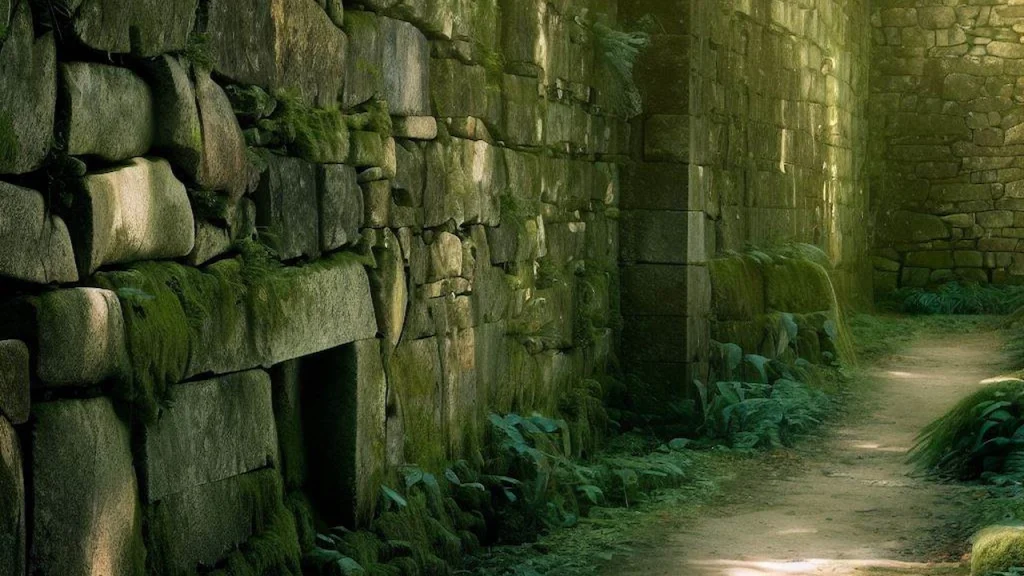
Who are The Barrié Foundation?
The Barrié Foundation has four main areas of work: education, science, social action and heritage and culture. In each area, the foundation has strategic guidelines and specific programmes that aim to address the needs and challenges of Galician society. Some of the foundation’s achievements include:
Education: The foundation has granted more than 15,000 scholarships for students and researchers since 1968, covering different levels of education from primary school to postgraduate studies. The foundation also supports school success, university excellence and lifelong learning through various activities and resources.
Science: The foundation supports scientific research in Galicia, especially in the fields of biomedicine, marine sciences and nanotechnology. The foundation also fosters education in research and knowledge transfer through training programmes, grants and awards for researchers and institutions.
Social action: The foundation works to improve the living conditions and social integration of the most vulnerable groups in Galicia, such as prisoners, immigrants, homeless people and people with disabilities. The foundation also professionalizes the third sector by providing training, advice and funding for social organizations.
Heritage and culture: The foundation conserves and recovers the historical and artistic heritage of Galicia, such as the Casa de las Ciencias museum, the Pazo de Raxoi palace and the Santiago Cathedral. The foundation also owns a collection of art that spans from the 16th century to the present day. The foundation organizes exhibitions, conferences and publications to disseminate and promote Galician culture.
The Barrié Foundation is one of the most important and influential foundations in Galicia and Spain. It has contributed to the social, economic and cultural development of Galicia for more than 50 years. It has also established partnerships and collaborations with other national and international organizations, such as the Royal Galician Academy, Cáritas Diocesanas, the University of Santiago de Compostela and the Massachusetts Institute of Technology.
Frequently Asked Questions (FAQ’s)
- What is the Monastery of San Xoán de Caaveiro? A: The Monastery is a historical and cultural site in Galicia, Spain, that dates back to the 10th century. It was founded by Saint Rudesind, a Galician bishop and abbot who was canonized by the Catholic Church. It has a Romanesque church, a cloister, a tower and a museum. It is declared a Cultural Heritage Site and is owned by the Provincial Council of A Coruña.
- How can I visit the Monastery? A: The Monastery is open to visitors from Tuesday to Sunday, from 10:00 to 18:00. The entrance fee is 2 euros for adults and 1 euro for children, students and seniors. There are guided tours available in Spanish, Galician and English. To get to the monastery, you can drive or take a bus from Ferrol or Pontedeume, two nearby towns. The bus will drop you off at the entrance of the Fragas do Eume natural park, where you can walk or take a shuttle service to the monastery.
- What is the Fragas do Eume natural park? A: The Fragas do Eume natural park is one of the best preserved examples of Atlantic coastal forest in Europe. It covers an area of over 9,000 hectares and is located in the north-west of Spain, in the province of A Coruña, Galicia. The park is named after the River Eume, which flows through it and creates a spectacular gorge with steep slopes and waterfalls. The park has more than 200 species of plants and animals, as well as several historical sites, such as the Castle of Andrade or the Bridge of Pontedeume. You can enjoy hiking, biking, kayaking or birdwatching in this park.
- Who was Saint Rudesind? A: Saint Rudesind was a Galician saint who lived in the 10th century. He was not only a bishop and an abbot, but also a regional administrator and a military leader under his kinsmen, the Kings of León. He founded or reformed several monasteries in Galicia and Portugal, such as Celanova, Xubia, Meira or Oseira. He also defended Galicia from Norse and Moorish invasions and participated in several councils and synods. He died in 977 in Celanova and was canonized in 1195 by Pope Celestine III. He is venerated as a saint by the Roman Catholic Church and the Eastern Orthodox Church. His feast day is March 1.
- Who are The Barrié Foundation? A: The Barrié Foundation is a non-profit organization that supports education, science, social action, heritage and culture in Galicia, Spain. The Barrié Foundation was founded in 1966 by Pedro Barrié de la Maza, a prominent businessman and philanthropist who wanted to foster the development of his homeland. Since then, the foundation has been carrying out various projects and initiatives to promote talent, research, social integration and cultural preservation in Galicia.
